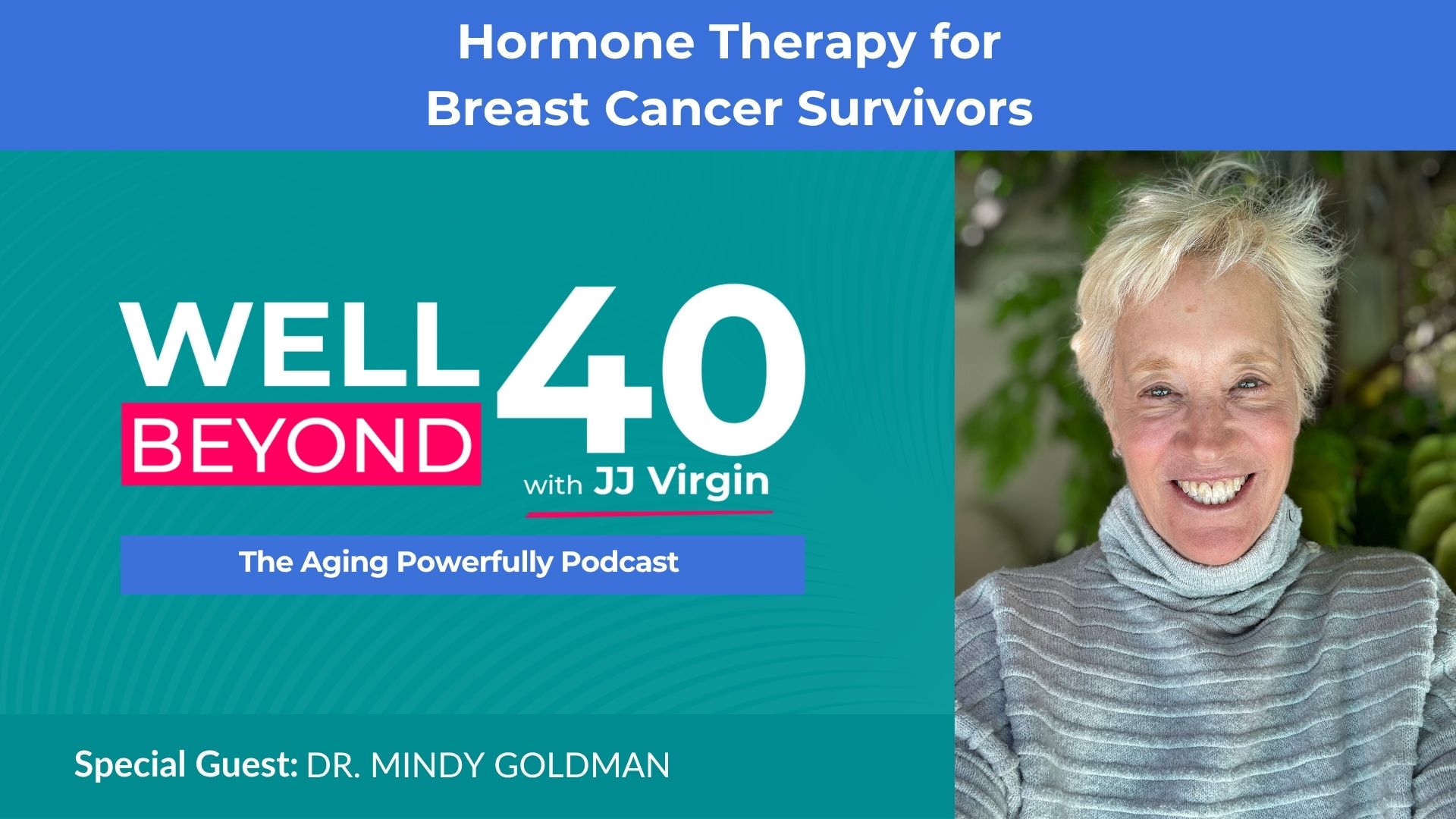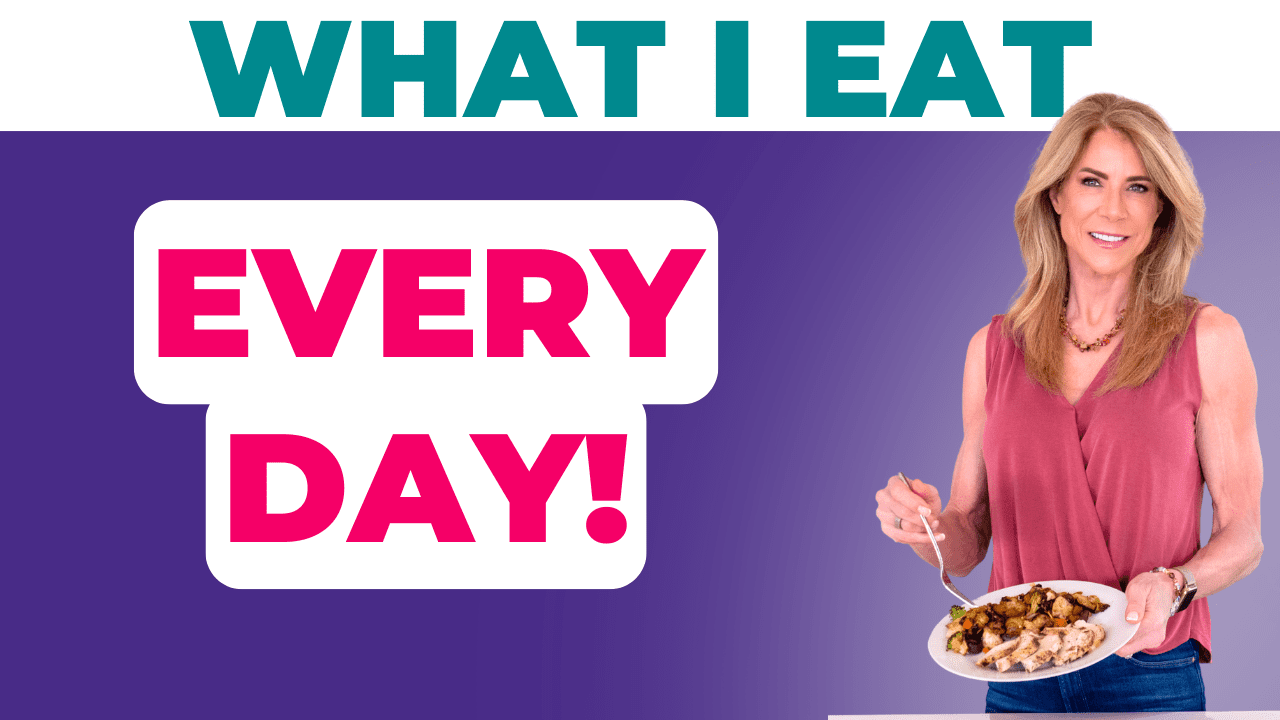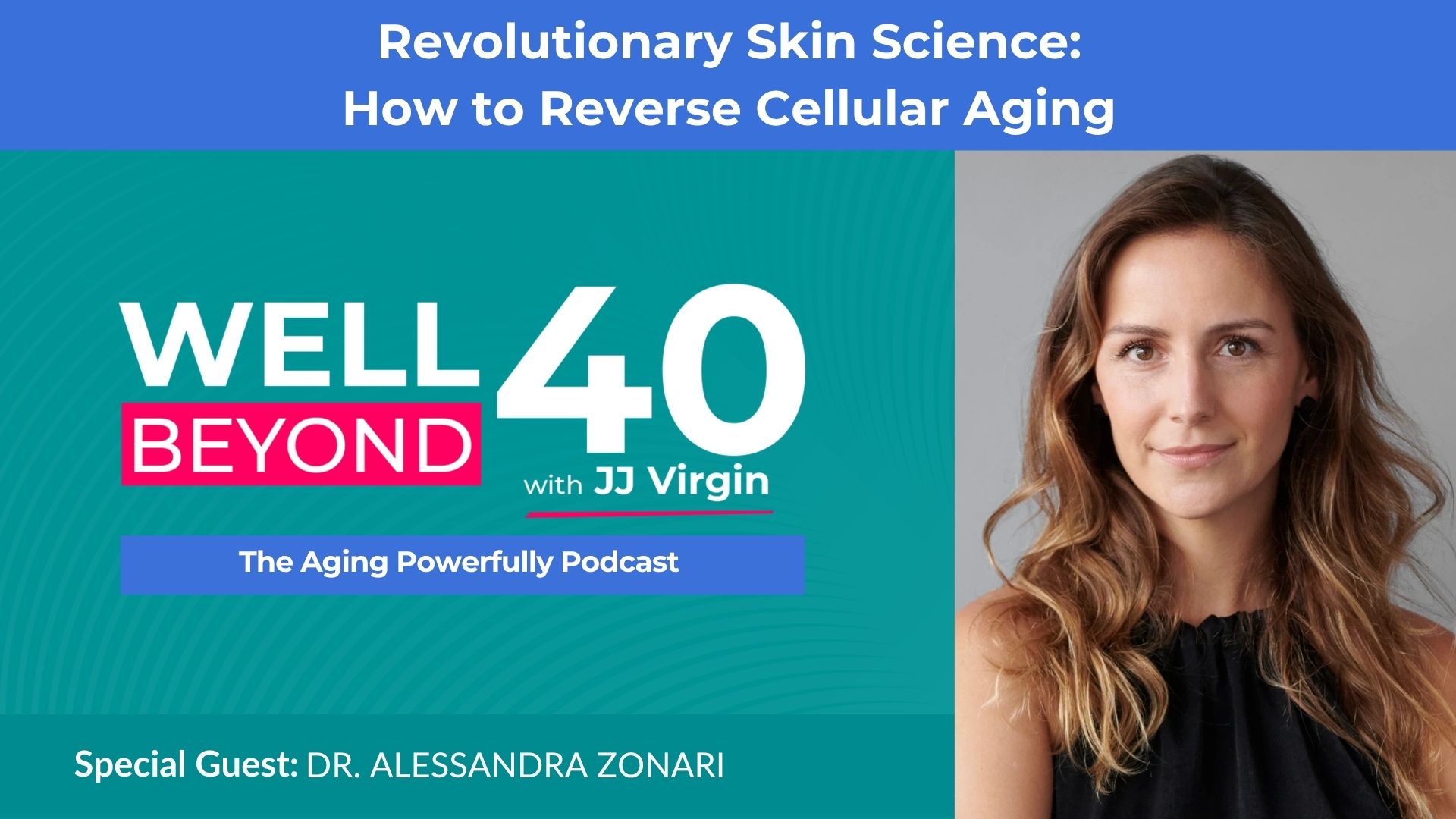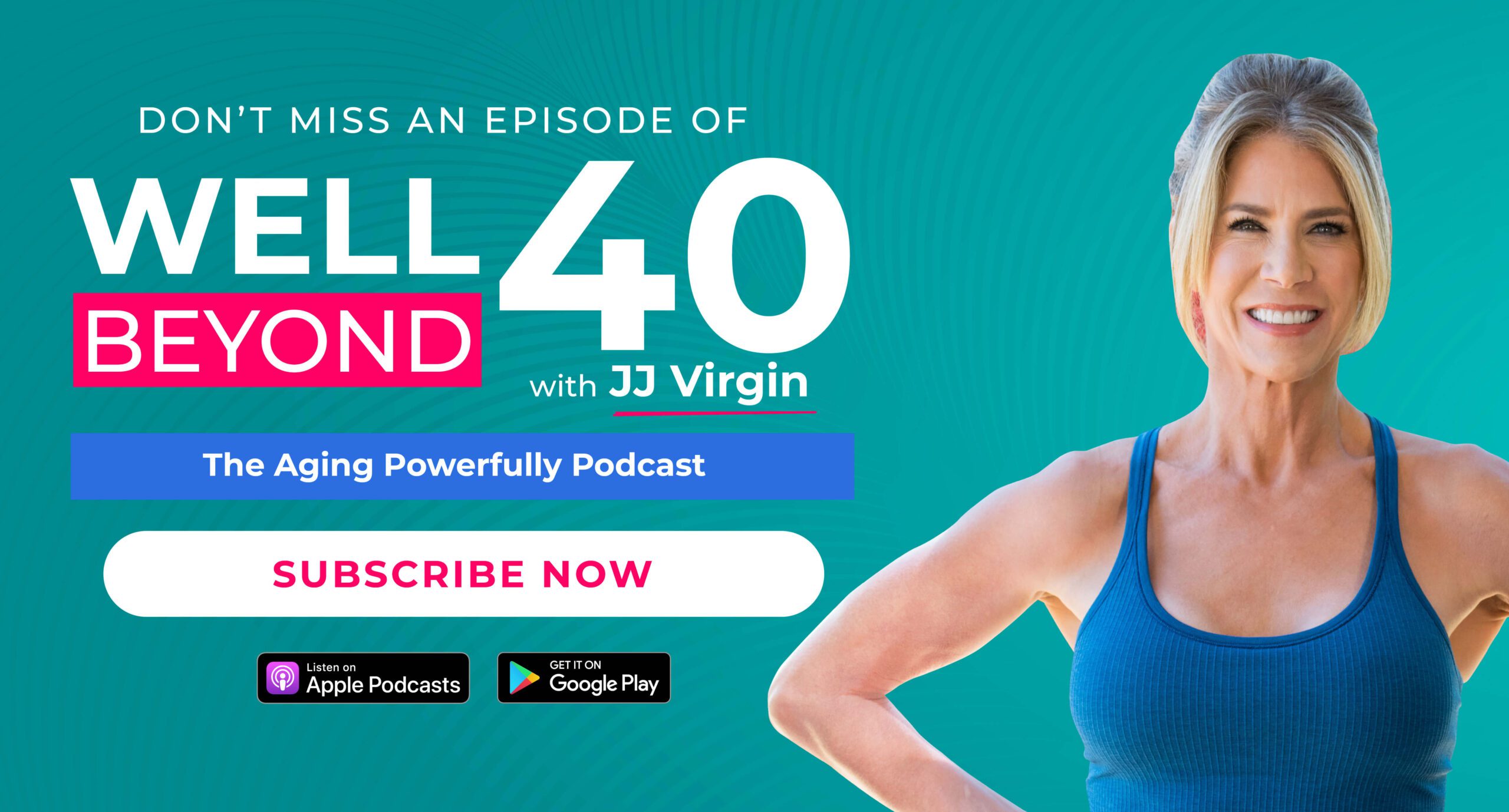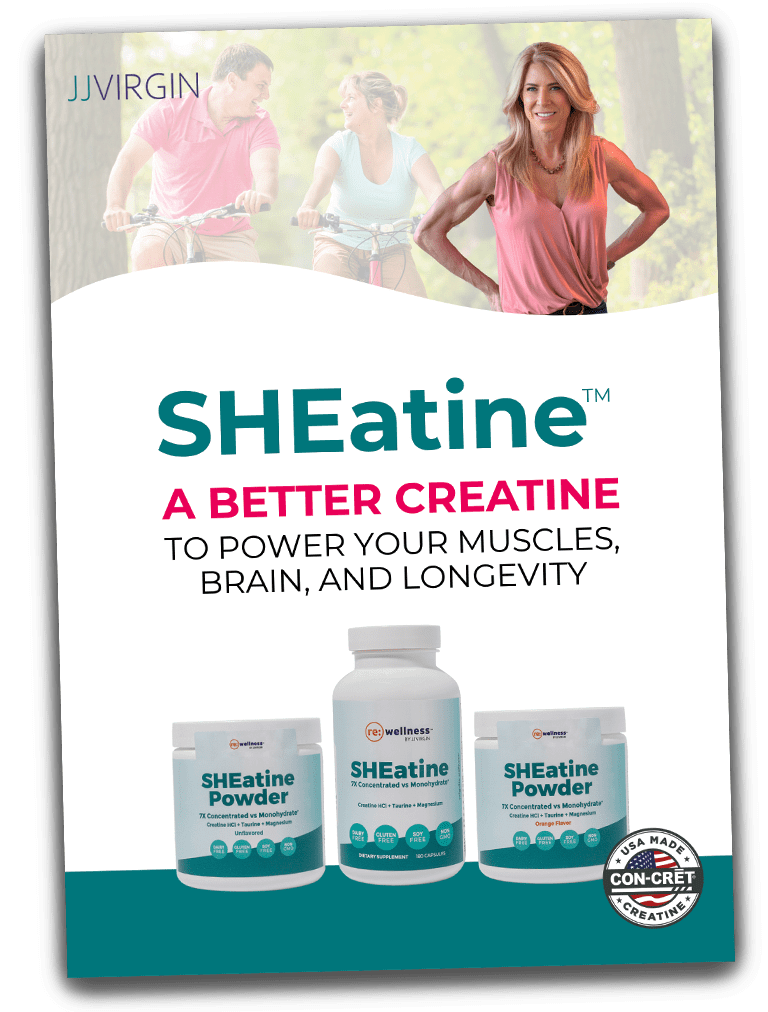Osteoporosis-Proof Your Future: Your Blueprint for Ageless Bones
In this eye-opening episode, I’m sharing my top strategies to build unbreakable bones and age powerfully. From surprising supplements to simple exercise tweaks, I’m breaking down the science-backed ways to keep your skeleton strong well into your golden years. Whether you’re approaching menopause or already there, you’ll learn how to take control of your bone health and avoid becoming a scary statistic. Don’t wait for a fracture to wake you up—tune in now to discover how to build a body that’s truly built to last!
What you’ll learn:
- The shocking link between hip fractures and mortality rates in older adults
- Key nutrients beyond calcium that are crucial for bone strength
- How protein intake affects your bone health (it’s not just for muscles!)
- The unexpected supplement that could supercharge your bone-building efforts
- Simple, low-impact exercises to stress your bones in all the right ways
- Why menopause is a critical time for bone health and what to do about it
- How to work with your doctor to optimize hormones for stronger bones
Resources Mentioned in this episode
7-Day Eat Protein First Challenge
Use my Eat Protein First Calculator
Reignite Wellness™ Collagen Peptides Powder
Vital Choice wild-caught seafood
Check out Power Plate and use code JJVIRGIN for 20% off your order
Reignite Wellness™ Plant-Based & Paleo-Inspired All-In-One Shakes
Download my free Resistance Training Cheat Sheet
Get 60 FREE delicious, protein-packed shake recipes in my Eat Protein First Smoothie Guide
TRX Resistance Training Equipment: Free Shipping on all orders $99+
Study: Vitamin D and Bone Health; Potential Mechanisms
Study: The benefits of exercise in postmenopausal women
Study: Whole-body vibration exercise in postmenopausal osteoporosis
Study: Estrogen and bone health in men and women
Study: Menopause and Bone Loss
Episode Sponsors:
Try Timeline. Use code JJ10 for 10% off all products
Try Qualia risk-free for up to 100 days and code VIRGINWELLNESS for an additional 15% off
And over five years, over 50 percent died. And for those who do survive, it’s pretty bleak. Only 26 percent of those patients were able to live independently a year after injury. And a lot of people just kept a bunch of disabilities after the fact. Now there’s good news. There is a lot that you can do to not be that statistic.
And I’ve broken them into a few different categories to share with you. There’s diet based strategies. There’s supplements. I’m betting at least one of these supplements is going to surprise you. And a few exercise variations, plus a bonus little chat about hormones. Now, before we start, please pinky promise me, DEXA scan done to check your bone mineral density and your skeletal muscle.
Because what you measure and monitor, you can improve. So let’s talk diet. Now you know my mantra, if you’ve been listening to me at all, is eat protein first. But it’s not just for satiety and skeletal muscle. Turns out that protein plays a fundamental role in building and maintaining strong bones. Along with, of course, muscle.
You know, what it does for our skeletal muscle because protein comprises about 50 percent of bone volume and one third of its mass. And collagen, which is a type of protein, as you know, is crucial for bone flexibility and strength as part of the bone matrix. Plus, protein supports bone mineral density and it aids in bone repair and growth.
It’s essential for growth and repair of bone tissue. It supports the function of these bone forming cells called osteoblasts and bone resorbing cells called osteoclasts and those work against each other for bone remodeling. It also enhances calcium absorption in the gut, which you’ve got to have for bone health and strength.
And of course we know that protein improves muscle mass and strength, and if you have better muscle mass and better strength, then you have less risk of falling. So, if you don’t know how much protein you need, I got you covered with my protein calculator. To get that, go to jjvirgin. com forward slash seven day.
That’s the number seven. day. Next up, I want you to eat your veggies. Of course, I want you to eat your veggies because of the polyphenols, but also for acid alkaline balance. Now, I don’t want you to get crazy here. There’s a lot of, kind of hype about being alkaline. Here’s one thing to know. There was a study in 2018 that was published in the journal Bone and Mineral Research that found that women who drank a lot of milk, and if you’re in my community, you’re not doing this, more than three glasses a day and didn’t really eat fruits or vegetables, like less than two servings a day, had a higher risk of hip fractures.
It was significant. And This was only slightly reduced when they brought in fruits and vegetables. However, when they turned those, that milk consumption, into fermented milk and they had a high intake of fruits and vegetables, they had very low fracture rates. What does this tell you? One of the things we do know is that if you just are eating a super acidic diet, it can be problematic.
Most of us aren’t doing that. The easy way to solve this is eat a lot of fruits and vegetables, especially a lot of non starchy vegetables, a little bit of fruit. If you’re having struggles with those veggies, have a green drink. Easy. Next up, vitamin D3 with K. Now, you want to do both of these together because their effects are both different foods.
And complimentary, so vitamin D. Let’s talk that one first. It’s super mission critical for absorbing calcium from your diet. Without enough vitamin D, your body can’t absorb calcium well, which is going to lead to weak bones, known as osteomalacia. Plus, vitamin D is needed for bone growth and remodeling.
Those osteoblasts we talked about earlier, building new bone and breaking down old bone by the osteoclast. If you don’t have enough vitamin D, you can have brittle, thin, or misshapen bones. There was a study review, it was actually a review of three different studies, that found a notable decrease in fractures among people who took high dose vitamin D.
Now one of those studies, they took 100, 000 IUs of vitamin D3, Every four months for five years and they had 33 percent lower fracture rate. So what I tell people to do with vitamin D is get your vitamin D3 tested. It’s a 25 hydroxy vitamin D test, and optimize your vitamin D at about 50 to 80 NGs per ml.
What I find with most people is that’s usually about 5, vitamin D3 a day, but yours might be higher or lower. Depends on where you live, depends on your genetics, depends on if you’re out in the sun without sunscreen. The other part is you’re going to take your D3 with K. Because they work together.
Vitamin K works synergistically with vitamin D because what vitamin K does, so vitamin D is getting the calcium absorbed, right? And then vitamin K, make sure it goes in the right place, vitamin K activates bone proteins. It activates those proteins that are involved in um, bone health. One of them known as osteocalcin, which binds calcium to the bones and strengthens them.
Vitamin K also reduces the risk of heart disease. Bone fractures, and it improves bone density by regulating calcium deposition in the bones. One of the things they say about vitamin K is that we make sure we get calcium in the right places. Plus, vitamin K promotes bone mineralization, and that is an important process where the body deposits mineral into the bones, which makes them denser and stronger.
And stronger. The other thing that vitamin K helps do is limit bone turnover and loss. And this is a big deal for post menopausal women who are at a higher risk of osteoporosis. In fact, when you really look at it, that is when you fall off the cliff, when your hormones go down. We’ll talk about that in a little bit.
Next up, fish oil. Okay. So. Eat fish. However, you might also want to supplement with omega 3 fatty acids. Fish oil offers significant advantages for building and strengthening healthy bones. First of all, omega 3s. help enhance calcium absorption. They also aid in bone formation because they support the activity of those bone forming cells, the osteoblasts, and they reduce the activity of the bone resorbing cells, the osteoclasts.
So you have better bone balance. If you’ve got lots of class and very little blast, you’re losing bone. You want to have those in balance. People who consistently use fish oil supplements have lower risk of total fractures, hip fractures, and vertebral fractures compared to those who don’t. There was a study that looked at habitual fish oil use, and it was linked to a 7 percent lower risk of total fractures, a 17 percent lower risk of hip fractures, and a 15 percent lower lower vertebral fracture risk.
So that’s, I mean, that is a huge difference. So ideally first eat great wild fatty fish. I get mine from Vital Choice. We’ll put a link to that. I love my wild salmon and my Chilean sea bass. And then test your omega 3s. So I go and do, um, every year, you might want to do it twice a year as you’re improving, an omega 3 index test.
And then I take my Reignite Wellness Omega Fish Oil to get myself into where I want to be. And what it’s going to look at is give you an index and then a comparison of your sixes to threes. And that’s when you can know that you’re, you’re where you want to be. And I always like to say, test, don’t guess, right?
This one may surprise you, this supplement. You think of it for muscles, but the reality is this thing helps you, this supplement is going to help you work out harder, which of course is going to be better for your bones. I’m talking creatine, and creatine provides the energy to bone forming cells, those osteoblasts, which support bone remodeling, which is critical for maintaining bone strength.
Also, remember one of the things that creatine helps you do is And if you can work out harder and increase muscle mass and strength, guess what you’re doing? You’re going to improve, improve your bone health as well. And you’ll also reduce your risk of fractures. Plus there’s some preliminary research now showing a potential for creatine supplementation to help with bone healing post fractures or surgeries.
I will tell you full disclosure, my husband just had a hip replacement, so I Kicked it up a bit. He already takes creatine. I just doubled it up. The big thing, though, that I want to emphasize is that creatine alone isn’t going to do it. You got to do the creatine with resistance training because you want to put the stress on the bone.
So that is super important. So how much creatine? Depends on the type of creatine you take. I’ve been playing around with two different forms. If you’re doing creatine monohydrate, it’s generally three to five grams. Will also depend on your diet. Women have less tissue stores of creatine. Probably because we eat less animal protein and you’re going to get creatine from fish and meat.
So another big shout out to the seafood. If you’re taking hydrochloride, you probably need 750 to 1. 5 grams a day. So 750 milligrams to 1. 5 grams because it’s better absorbed. Okay, well I already talked a little bit about collagen. Now collagen is something that I use every day and I’ve been doing it for my connective tissue, my hair, skin, and nails, but it’s also the main protein in bones and it provides that framework that helps maintain bone strength and flexibility.
So collagen supplementation, which is so easy to do, throw it into your smoothie, throw it into your coffee, throw it into your yogurt, especially collagen peptide supplementation, Can help support good bone mineral density. And I want you to really think of this if you’re heading into menopause, because this is when we’re at higher risk.
It can stimulate osteoblast activity and it may reduce that osteoclast activity. So again, we want to make sure we have that balance here. We don’t want to be breaking down more than we’re building up. Also, collagen supplementation can help slow the rate of bone degradation at naturally occurs with age.
And, you know, if you are breaking down more, guess what you’re getting into osteopenia or osteoporosis. So there was a study in 2018, it was published in Nutrients Journal that looked at 131 postmenopausal women. And what they did was investigate the effects of a collagen peptide supplementation on bone mineral density.
And they did it over 12 months. And participants took five grams of collagen peptides, daily. And what they found was that there was a significant increase in bone mineral density at the spine and the femoral neck for that peptide collagen peptide group. Three percent increase in the spine, almost seven percent increase in the femoral neck.
Compare this to the placebo group. They lost around one percent in both of those areas. Also, the bone formation marker P1NP increased significantly in the collagen peptide group and the bone degradation marker CTX1 increased in the placebo group. So, You think of collagen again for your hair, your skin, your nails, maybe your connective tissue.
I want you to think about it for bone health as well. And how do you do it? So collagen peptides are so easy to do. It’s one that I’ve been carrying in Reignite Wellness for years because I always carry what I use. And then you can also use my Bone Broth Paleo Protein. It’s about 80 percent collagen, so easy enough to get these things into your diet.
And of course, you can always drink bone broth. Next up is exercise. And to start with, I like everyone to get their steps in every single day. 8, 000 is the minimum, but more is better. And then what I like you to do is add a little intensity. And I have you do that by adding a ruck in the top. What the heck is a rucking vest?
Rucking is as simple as just putting on a weighted backpack. When you think about it, we’ve been rucking since we were little kids. Think when you went to school and you had to carry, remember books? We had to carry them in the backpack. It turns out that rucking, which walking with that backpack or walking with a weighted vest, which is a way I like it better, or even walking with a belt is a, an effective way to build and strengthen healthier bones.
So, What you’re doing when you’re putting all that weight on you is you’re stressing your bones. What happens when you stress your bones? When your body goes, whoa, it actually increases signals to your body to go, hey, build more bone. So it’s a very simple thing you can do on a regular basis. And here’s what’s great.
You’re stressing the most common areas for osteoporosis, your spine and your legs. And what’s also great here is it’s gentle on your joints. I’m going to talk some more on exercise, some other things I want to do. But when you think about a lot of the high impact exercises, some of them you might be a little bit concerned to do if you’ve already got osteoporosis.
And the other cool thing with rucking is it’s going to put a little weight on that helps you deal with Balance and stability. So that can help prevent falls. There’s been a lot of research on rucking. It seems to be kind of the hip cool thing now. There was a 2018 study that was published in the European Journal of Inflammation that found that weight bearing physical activity, like rucking, improves bone mineral density and neuromuscular function in osteopenic muscles.
So, either get yourself a little backpack, throw some water bottles in it, or get yourself a cute rucking vest, there are now ones for women, and get on out there. The other thing that I want you to do is resistance training. And this is super important. There’s very specific things that I want you to do.
Why is this important? Because it applies stress to the bones, right? And that’s going to stimulate those osteoblasts, which then is going to help you build up that bone, which is going to help you have a Stronger, denser bones. In fact, we know that regular resistance training increases bone mineral density.
That is what you’re testing when you go get the DEXA. So yes, we can put on more bone. Now, as we age, we’re losing bone mass, and resistance training can push against this and help make sure that you keep that strength through life. Plus, Not only are you building stronger bones, you’re building better muscles too.
And what do we know about muscles? They support and protect the bones and they also help you reduce the risk of falls and fractures because you’re improving your balance, your coordination and your mobility. So what do I want you to do in the gym? There are some very specific things that can help here because when you think about what you’re trying to do, you really want to load your spine and your hips.
So some of my most favorite exercises for bone density, the first one is an overhead press while standing. Why? Because when I push weights overhead, Guess what I’m doing? I’m strengthening my shoulders. I’m strengthening my arms, but I’m putting load, axial load, that’s called down my spine and onto my hips, which is super great.
The other one that I want you to do is a squat. And you, if you’re thinking right now, I can’t do a squat because of my knees and my back. I want you to just consider this. You get up off the toilet, you’re getting out of the chair. We actually have to squat all the time. So let’s do it in a controlled environment so that when we’re out in the wild, we don’t get hurt.
But these squats are amazing because we’re loading again those hips and we’re also improving that strength. And what you can do to start is just simply have a chair behind you and just do what’s called an air squat, right? Okay. Now. We’re going to take it up a notch. An advanced version of the squat is a little squat jump.
And so all you do with this is you come down and at the end of the squat, you do a little jump up. And it’s that impact that puts stress on the bones that is so beneficial for bone strengthening. And you can start so easy because you start with the air squats, then you add a little bit of a jump, and then you can add a bigger jump.
This can make a huge difference for you. Now I recently acquired. A power plate, a vibration plate. This is known as whole body vibration. And I’ve been looking at these for a while. I was like, do these really do anything? Turns out they stimulate bone formation by subjecting bones to this mechanical stress.
And that’s going to help you increase bone density. In fact, regular use of vibration plates can improve both bone strength, So now you’re less susceptible to those fractures and osteoporosis. And the vibration from the plates helps promote bone mineralization. And that means that you’re ensuring that essential minerals like calcium go into the bones, which makes them stronger and denser.
Also, vibration therapy triggers the release of growth factors like IGF 1. Insulin like growth factor and BMP2, bone morphogenetic protein 2. Those both help promote bone formation and repair. And, vibration plates also improve blood circulation, which means you’re delivering essential nutrients and oxygen to the bones.
And of course, that’s going to help support bone health and healing. And, A little aside, more about my husband’s hip replacement. This is also a key thing that we’re using to help him in his recovery. So there was a study in 2015, it was published in Menopause Review, where 70 women underwent whole body vibration twice daily for 10 minutes over 12 months.
And what the results showed was a decrease in bone loss of 1. 5 percent in the spine and 2. 1 percent in the femoral neck region. And that is huge. Now, finally, I promised you a little hormone piece, and so I want to talk briefly about estrogen and progesterone, because they are two key hormones that play a significant role in women’s health.
And of course, part of that is the maintenance and health of your bones. And that impact is huge. It’s huge. In fact, when you really look at menopause, that’s when women’s bone mineral density just falls off the cliff. So let’s talk estrogen first. Estrogen helps balance bone breakdown and formation. It supports bone density by shortening the lifespan of bone resorbing cells, osteoclasts, and promoting the activity of those bone forming cells, those osteoblasts and bone maintaining cells, osteocytes.
Estrogen also prevents excessive bone resorption and this is super important during menopause when declining estrogen levels can lead to increased bone turnover and accelerated bone loss. This all increases that risk of osteoporosis. Remember I said menopause we just kind of fall off the cliff. The other thing that estrogen assists in is calcium absorption and it also influences vitamin D metabolism.
There was a study in 2015, it was published in steroids, that found that during menopause, the decline in ovarian estrogen levels is linked to decreases in bone mineral density. And over a 10 year period, there’s an average cumulative loss of 9 percent in the femoral neck and 10. 6 percent at the lumbar spine.
So again, things just kind of go off the cliff with menopause. The other side is progesterone and progesterone can stimulate those osteoblasts and it works with estrogen to enhance bone formation and potentially increase bone density. It also may enhance bone quality by influencing the turnover rates, promoting the deposition of new bones.
But we don’t really know exactly how it works as well as we do with estrogen. We know that it collaborates with estrogen to regulate bone remodeling and that these two hormones work together in a balance to really help with optimal bone health during reproductive years. In 2022, there was a study published, an article published in Endocrine Society that Shared that research indicates that up to 20 percent of bone loss can happen during menopause.
One in 10 women over the age of 60 are affected by osteoporosis worldwide. So this is one where I’d say consider, if you are going through menopause, consider working with a functional medicine doctor. Do your research and check in for HRT for you because you do not have to be a statistic. We’ve got diet changes.
Exercise changes, hormonal things that you can do that all can help fortify your bones to keep you solid and age powerfully and be built to last. If you want more tips on this, check out my video on bone health, what to eat, when and why.
Hide Transcript
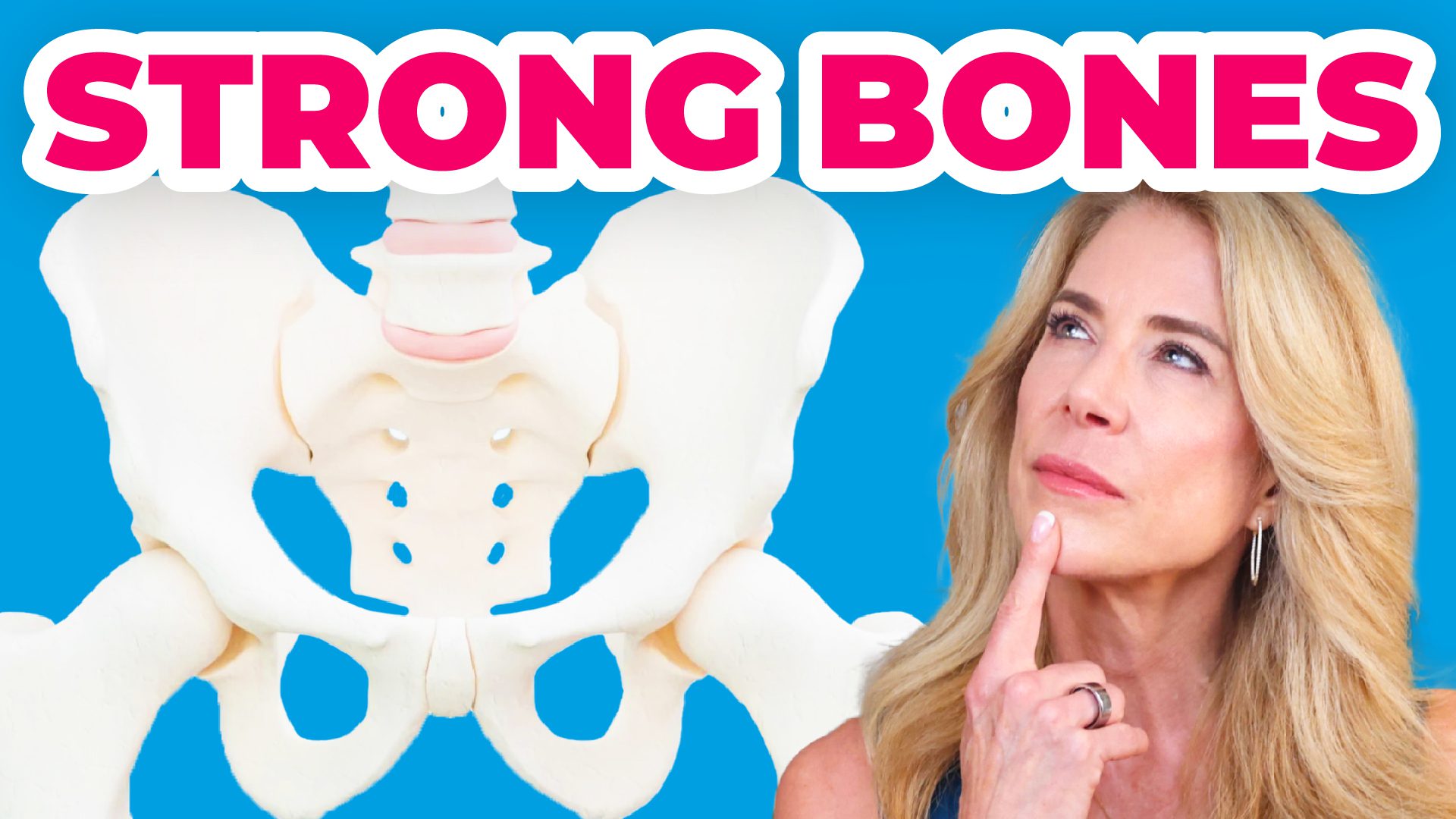
 Subscribe to our show
Subscribe to our show 